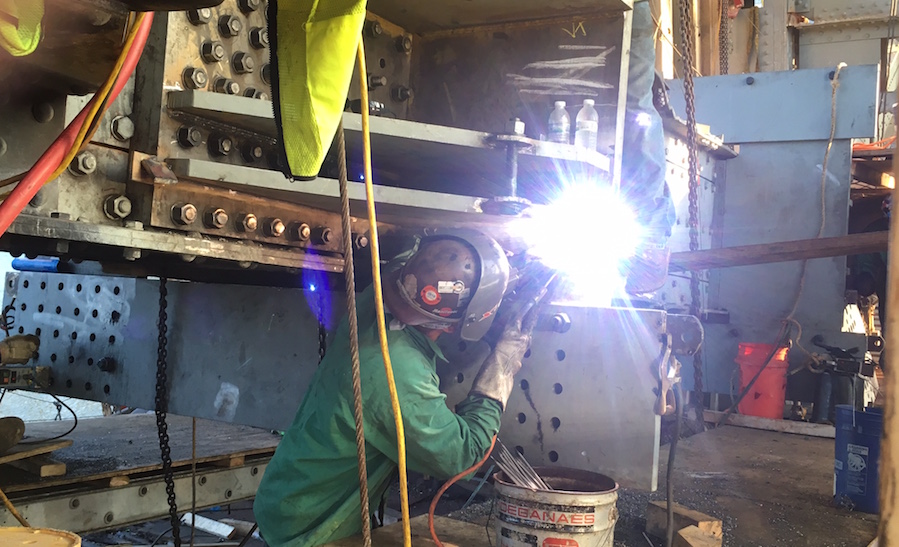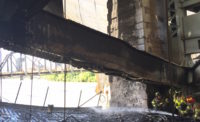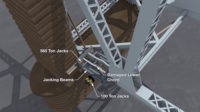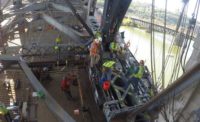Repairing Pittsburgh's fire-damaged Liberty Bridge is taking longer than anticipated because of the need for a unique fix, say state officials.
Since a Sept. 2 fire damaged a truss cord near the center of the span and diverted all traffic, general contractor Joseph B. Fay Co. and the Pennsylvania Dept. of Transportation have been working around the clock to fix it. Experts working for PennDOT and Joseph B. Fay Co. have been unable to find a similar case of a bridge damaged by fire in the same way, slowing the progress.
At a press conference on Sept. 16, PennDOT District 11 Executive Dan Cessna said reopening the bridge would take weeks.
The fire damaged 30 ft of cord truss subject to substantial loads, according to PennDOT.
The $80-million rehabilitation project involves a full rehab of the bridge, including replacement of some structural elements. The fire started when, during the steel-cutting process, sparks from a welder’s torch accidentally ignited a tarp and plastic piping, which was being stored nearby.
Cessna said more than a dozen experts from across the country—including pros from Lehigh and Carnegie Mellon universities—are collaborating to design the bridge’s repair. On Sept. 15, experts recommended installing a second bracing system at the top of the pier, which bears the arched truss. The secondary bracing system offers redundancy to the one already planned, but that plan set the repair back a bit more since those parts also must be fabricated.
The team of experts is finishing the repair design and procedures to begin the jacking needed to complete the work, Joseph B. Fay Co. said in a Sept. 20 statement.
In that statement, Jim Wilkinson, Joseph B. Fay Co.'s executive vice president, said the company had completed installation for the assumbly to address the original repair.
"We have also fabricated additional materials to aid in straightening the damaged 30-foot cord. The actual jacking should begin in the next couple of days,” he said. “Because of its complexity and the amount of monitoring that will take place during the jacking, we will rehearse with all participants a day before we actually start. This will give us one more opportunity to make final adjustments.”
The repair team includes experts in bridge structural analysis and modeling, hydraulic jacking systems, application of heat to steel, materials science, and inspection and monitoring. The team also includes the ironworkers who are assembling the repair, as well as supervisors and support labor, Wilkinson said. “Several details still need to be finalized before the dry run. The duration of the jacking can be accurately forecasted only once it begins and the reactions of the bridge structure are measured to ensure we are achieving our engineering objectives.”






Post a comment to this article
Report Abusive Comment